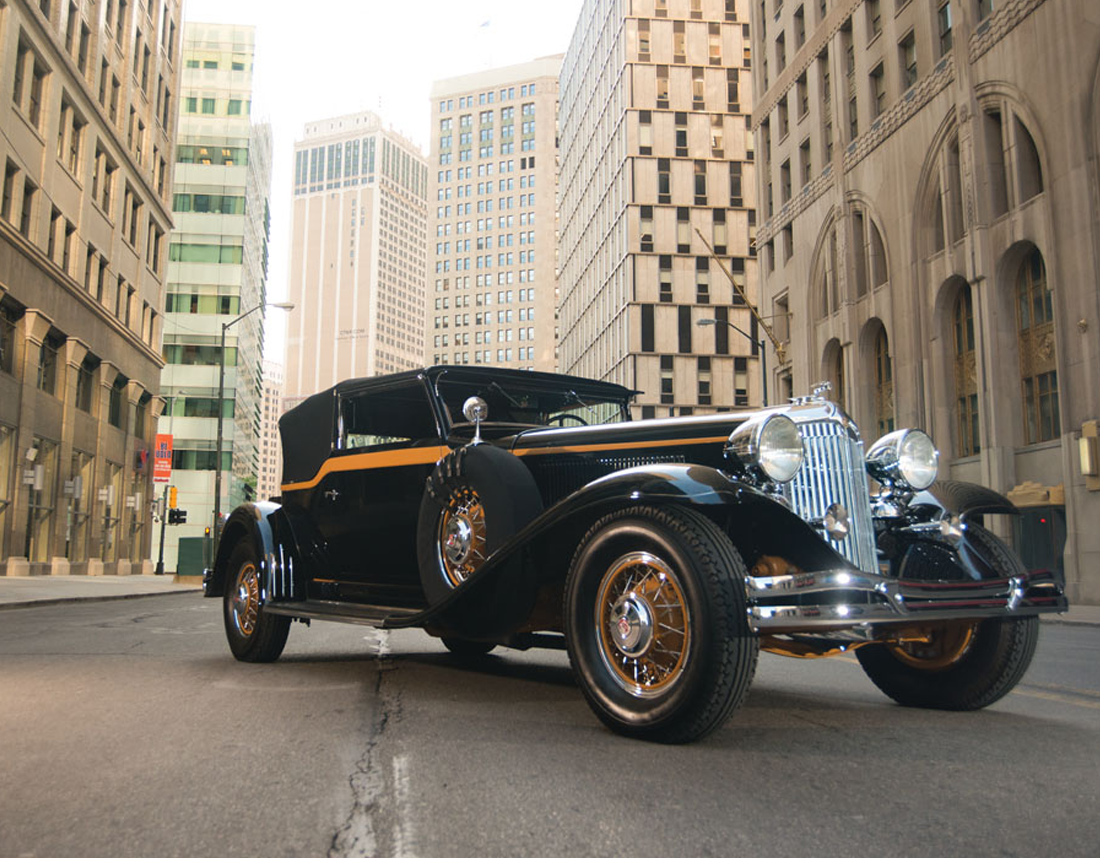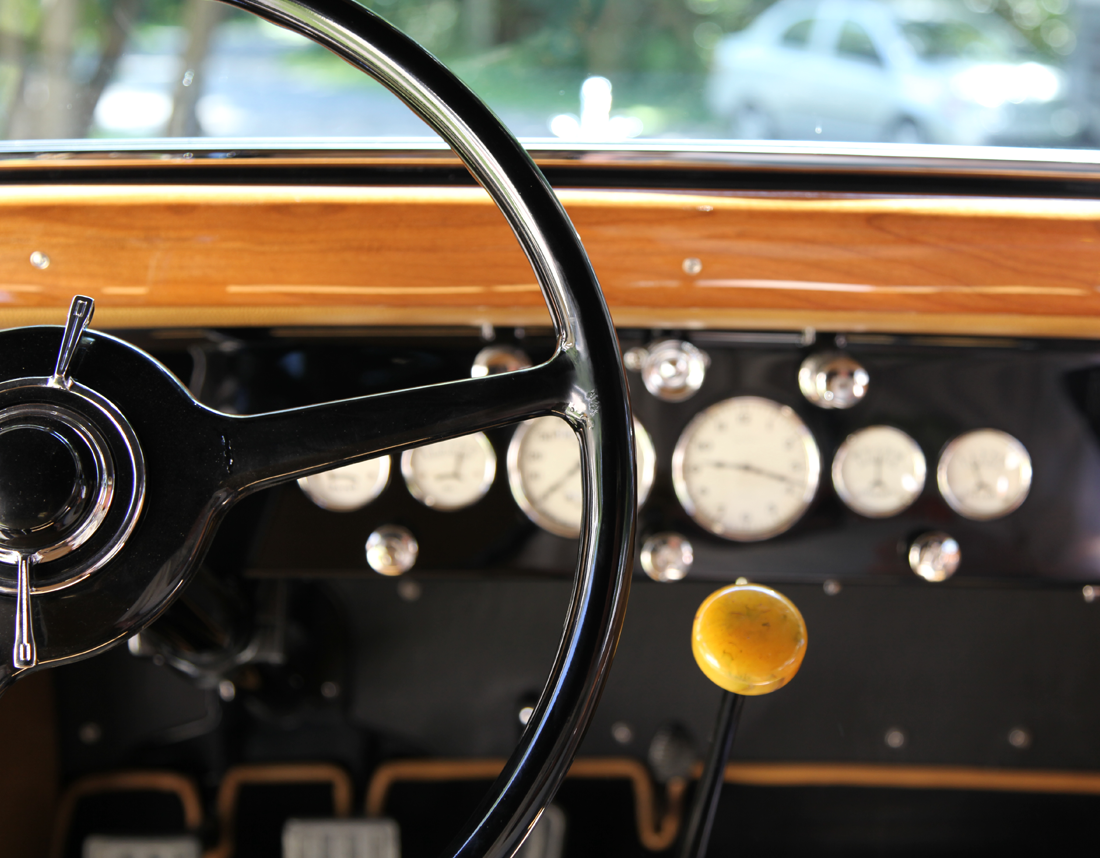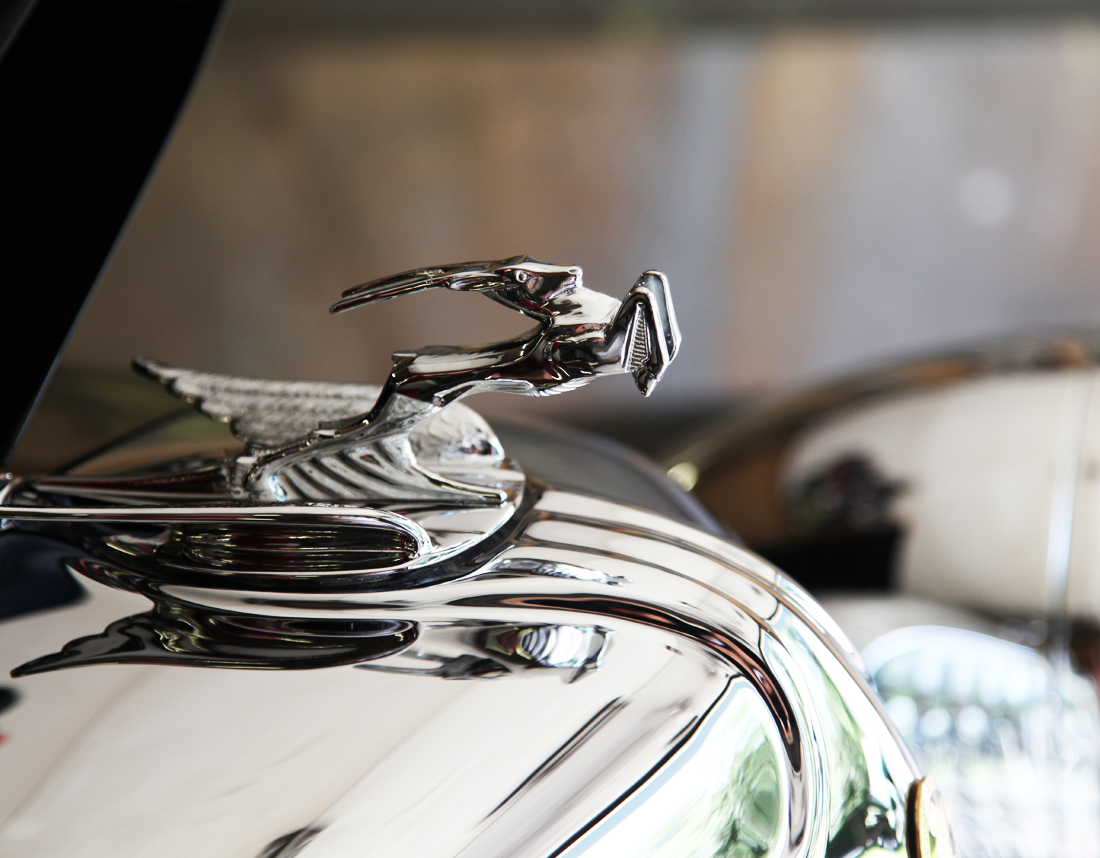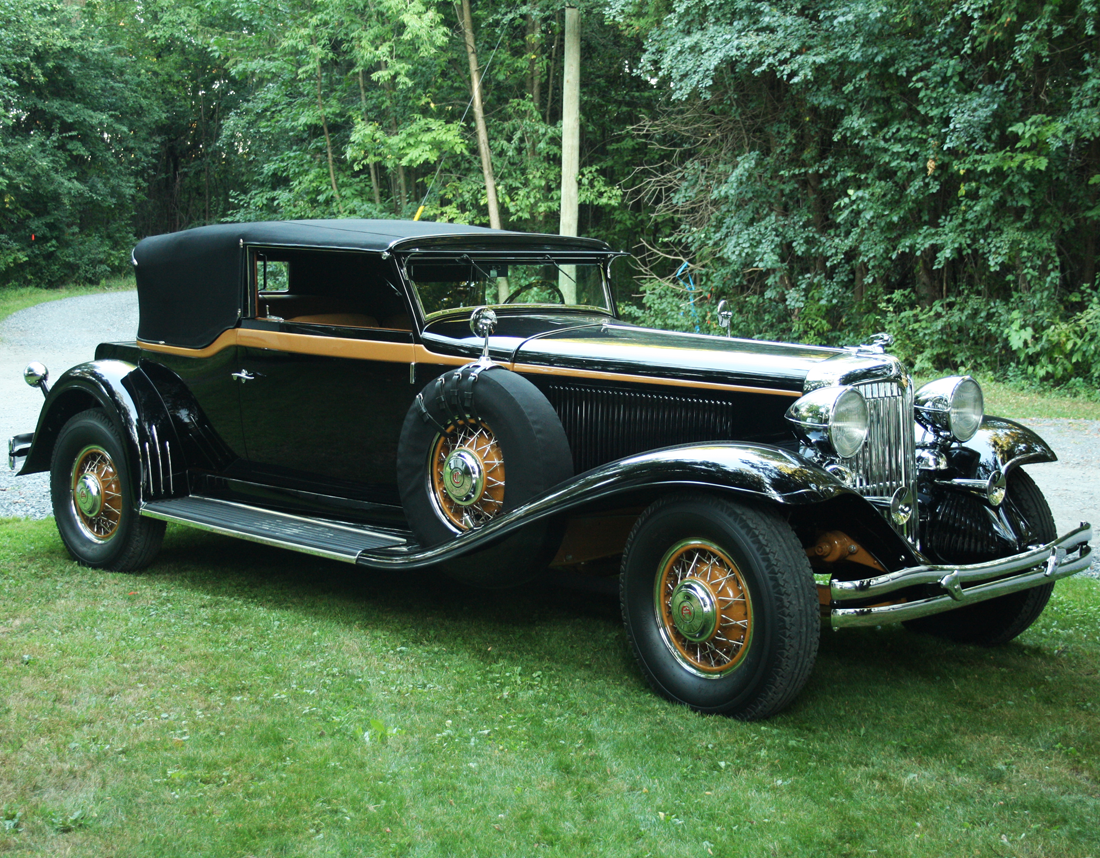This 1931 Chrysler CG Imperial Custom Convertible Victoria by Waterhouse was produced on June 15, 1931. Known history dates to 1939 when Mr. Calvin Collins of New York purchased it from the McCormick Garage. The car was enjoyed by the Collins family for several years but was almost lost to the scrap drives of World War II. At the insistence of his young son Scott, the sculpted Imperial was spared, but in a balance of patriotism and patronage, the Chrysler gave up the single heaviest piece of metal that could serve as war material—its engine. Many special cars were lost to the war, and it is due to the vision of early collectors like Calvin Collins who quietly preserved cars too precious to re-purpose that these treasures survive. While salted away in the family barn, the younger Collins dreamt of restoring the old car, and he collected original parts over the years to serve a future restoration. In 2009 Scott Collins phoned noted Canadian restorer Richard Grenon, who immediately struck a deal to purchase the car. By this point, the car had been in the Collins family for a remarkable 70 years!
Although the rare Convertible Victoria had been exposed to the elements, Grenon had the vision to see the potential of the great motorcar. Amazingly the chassis was in excellent shape, and the aluminum body had also fared remarkably well. Although the majority of the wood framing required replacement, only three inches of the lower quarters required repair. Mr. Grenon notes that the remaining original wooden pieces and many smaller chrome elements still bear the “163” stamping which refers to the Waterhouse job number.
Of the 296 bodies originally produced by the tiny Massachusetts coachbuilder revered for exceptional quality, it is believed that only about 30 remain.
Waterhouse was founded in 1928 by two former employees of Judkins, Charles Waterhouse and his son Moses. The firm’s initial goal was to supply bodies for the DuPont motor car, a significant milestone which was achieved when Waterhouse purchased the assets of the Woonsocket Mfg. Co. and fortunately acquired the talent of George Weaver. With this notoriety, the firm gained enough traction to clothe some of the most prestigious chassis like Packard, Pierce-Arrow, Stutz and Marmon. In a short but distinguished run, the firm produced approximately 296 bodies; the vast majority of the firm’s production, approximately 251 bodies, were placed on the Lincoln, DuPont and Packard chassis. Of 31 Waterhouse bodies built on various chassis, only six or less are believed to have been mated to the CG Imperial.






